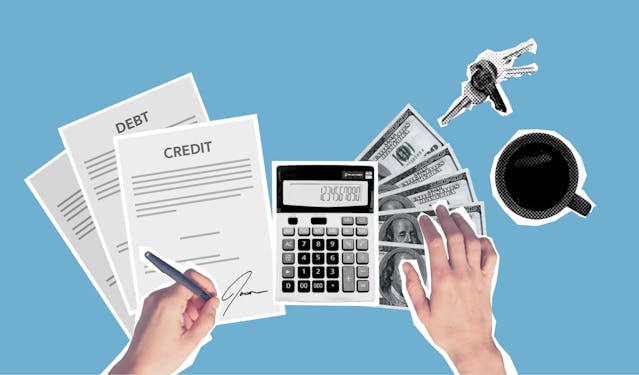A balance transfer card is a type of credit card specifically designed to help people manage existing credit card debt more effectively. It allows you to move your debt from one or more cards to a new card, usually with better terms. The main advantage of using a balance transfer card is the opportunity to consolidate multiple credit card debts into one account, which often comes with a lower interest rate. This can simplify your monthly payments and reduce the amount of interest you pay over time.
How Does a Balance Transfer Card Work?
When you apply for a balance transfer card, you’ll typically need to fill out an application that includes details about your current credit card debt. This information generally covers the account numbers, the names of the creditors, and the total amount owed. Once you’re approved for the balance transfer card, the new card issuer will facilitate the payment of your existing debts on the old cards. As a result, those balances will be moved to your new balance transfer card.
Balance transfer cards often come with enticing introductory offers, such as 0% interest for a predetermined period, which typically ranges from 12 to 18 months, although some offers may extend up to 24 months. This introductory period is crucial as it gives you a window of opportunity to pay down your debt without accruing additional interest. For individuals with a considerable balance, this could translate to significant financial savings and a chance to reduce the debt principal much more quickly than with standard interest rates.
However, it’s vital to be mindful of what happens after the introductory period expires. The balance transfer card will revert to its regular interest rate, which might be competitive compared to standard credit cards but can still be high. To maximize the benefits of a balance transfer card, you should aim to pay off as much of the transferred balance as possible within the introductory period. Otherwise, you could find yourself facing high-interest charges once again.
Is a Balance Transfer Card Right for You?
Deciding whether a balance transfer card is a suitable choice involves a careful review of your financial situation and debt management strategy. Here are some additional factors to think about:
- Your credit score: A higher credit score not only increases your chances of being approved for a balance transfer card but also could secure you more favorable terms. If your credit score is not in the good to excellent range, your application might be denied, or you might receive less attractive terms.
- Your current credit card debt: Balance transfer cards are most beneficial for individuals who have accumulated debt on high-interest credit cards. If you don’t carry a balance or if your current cards have low-interest rates, the benefits of transferring your balance might not outweigh the potential costs.
- Your ability to pay off the balance: While the primary appeal of a balance transfer card is the initial period of low or no interest, it’s essential to have a realistic plan for paying off the balance. If you’re unsure about your ability to pay off the balance before the introductory period ends, you might be better off considering other debt repayment options to avoid falling into a cycle of high-interest debt.
- Fees and terms: It’s not just the interest rates that matter. Some balance transfer cards charge a fee for transferring a balance, which is typically a percentage of the transferred amount. Additionally, there may be annual fees associated with the card. Always read the fine print and understand the terms and conditions, including any penalties for late payments or exceeding your credit limit, which could negate the benefits of transferring your balance.
Read More tips on The Dos and Don’ts of Credit Cards.
How to Transfer Credit Card Balance
If, after careful consideration, you’ve decided that a balance transfer card is the right tool for you, follow these steps to make the process smooth and effective:
- Research for the best balance transfer card: Start by comparing different balance transfer cards to find one with the most suitable terms for your situation. Look for cards with a long introductory period, competitive post-introductory interest rates, and low balance transfer fees.
- Complete the application process: Once you’ve chosen a card, complete the application. Be prepared to provide comprehensive information about your existing debts, including creditor names, account numbers, and the total amount you wish to transfer.
- Await approval and transfer completion: After approval, the new card issuer will handle the payments to your old accounts. This process can take a few weeks to complete, so continue making payments on your old cards until you’ve confirmed that the balances have been fully transferred.
- Consider your old accounts: While it may be tempting to close your old credit card accounts to prevent further spending, doing so could potentially harm your credit score by affecting your credit utilization ratio and the average age of your credit accounts. Instead, consider keeping them open but with a zero balance, or if you’re concerned about overspending, put them away in a safe place where you’re less likely to use them impulsively.
- Prioritize payments on your new card: Develop a payment plan that allows you to maximize the benefits of the introductory offer. Pay more than the minimum payment each month if possible to reduce the principal balance as quickly as you can.

Alternatives to Balance Transfer Cards
Balance transfer cards can be a powerful tool, but they’re not the only option for managing debt. If you’re not sure that a balance transfer card is the best choice for you, consider these alternatives:
- Personal loans: A personal loan might be more suitable if you have a substantial amount of debt or need more time to pay it off than a balance transfer card’s introductory period allows. Personal loans usually have fixed interest rates and offer a variety of repayment terms, which can help you manage your monthly payments more effectively.
- Debt management plan: For those who find it challenging to keep up with multiple credit card payments, a debt management plan (DMP) might be a better fit. A DMP involves working with a credit counseling agency that negotiates with your creditors on your behalf to potentially lower your interest rates and consolidate your monthly payments into one more manageable amount.
- Negotiating with creditors: In some cases, it might be possible to directly negotiate with your creditors for a reduced interest rate or a payment plan that fits your budget. While this can be a time-consuming process, it’s a viable option for those who prefer to directly manage their debt without opening new accounts or taking out a loan.
In Conclusion
Opting for a balance transfer card can be an intelligent move for tackling credit card debt, but it’s not a decision to be made lightly. Conduct thorough research on different cards, fully understand the associated fees and terms, and devise a plan for paying off your debt within the introductory period. A balance transfer card, when used responsibly, can be a stepping stone to a more stable financial future, but it’s just one piece of the broader financial management puzzle. Choose wisely and use the tools available to you to create a tailored strategy that leads to debt freedom.





























